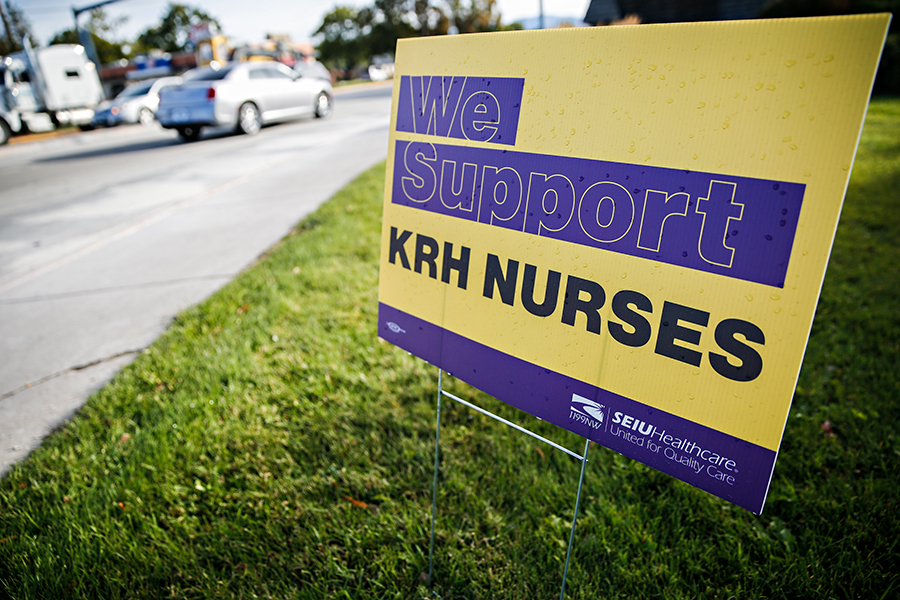KRH Unionizing Nurses Launch Campaign to Air Grievances Publicly
Website, yard signs and petition among efforts; nurse bargaining team and management meeting for 12th time this week
By Myers Reece
In an already crowded landscape of yard advertising for political candidates, new signs are cropping up across the valley that have nothing to do with the general election, promoting messages such as “put patients before profits.”
The signs are the result of unionizing nurses deciding to go public with their grievances amid collective-bargaining negotiations with Kalispell Regional Healthcare management. The nurses have also launched a website, www.kalispellnurses.org, and are distributing petitions seeking community support.
The focal points of their efforts are centered on three primary sticking points: compensation, health insurance and staffing ratios.
“We’ve been going around to businesses and asking the public to help support us, because we are fighting to have the resources and staff to take care of the community and the hospital will not discuss these issues with us at the table,” said Cindy Hinzman, a PACU nurse and member of the nurses’ bargaining team.
Cindy Morrison, KRH’s transformation officer, said the hospital isn’t surprised to see the signs and publicized efforts, and that they will have “very little influence” on negotiations from management’s perspective.
“We expected it,” she said. “We’ve communicated with employees and said these are standard union activities. And we’ve explained to employees that those activities are an attempt to try to bring pressure and that you will likely see more.”
In July 2019, nurses voted 372-199 to unionize, with representation from Service Employees International Union (SEIU) Healthcare 1199NW, a Washington-based union. The vote created a bargaining unit of about 650 nurses across the KRH system, including Kalispell Regional Medical Center, The HealthCenter, Brendan House and other clinics.
According to a press release from SEIU Healthcare 1199NW after the vote, nurses said they made their decision in order to “have a voice in their future, a great ability to advocate for their patients’ safety and quality care, and an environment in which their contributions and insights are valued.”
In addition to concerns over staffing levels and quality of patient care and safety, nurses also cited unfair wages, lack of wage transparency, loss of benefits, low morale and inability to voice concerns as grievances in their unionization push.
The two sides have met 11 times, with a 12th meeting scheduled Sept. 29, since negotiations began last year. While a recent SEIU newsletter listed a number of “tentative agreements,” Hinzman said nurses are frustrated by management’s stances on compensation, health insurance and staffing ratios.
SEIU has produced research showing the pay scale for nurses at KRH to be lower than at smaller hospitals in Montana and considerably below health-care institutions in places with comparable cost of living.
Hinzman said nurses don’t believe management is “bargaining in good faith,” and says a mediator from the National Labor Relations Board who recently joined negotiations could improve the process. She hopes contract negotiations are wrapped up by the end of the year.
“Hopefully the mediator is going to help them understand how bargaining should really work,” Hinzman said.
Morrison said management has been “thoughtful and fair and willing to negotiate,” and that it has to consider the diverse demands of business, a sprawling staff and patients from a broad geographical area.
“I’m certain as you go through this process, you’re going to see so many things said and accusations made,” she said. “At the end of the day, we’re running an organization that is responsible for caring for thousands of people, not just our employees but our patients as well.”